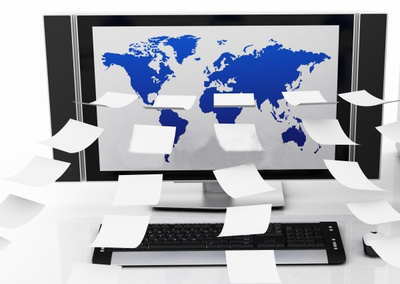
Electronic Medical Records System Top Five Benefits
There are many benefits that an electronic medical record system can give. In this article, Nitin Chhoda emphasizes on the top five most important benefits that EMR can provide so that practitioners who have not adopt the EMR system yet will understand its importance.

Electronic medical records are the next big thing in physical therapy management.
When EMR systems are fully adopted by all facilities, you are going to see a major change in how medicine is practiced.
Here are the top five benefits of using an electronic medical records system if you are a physical therapist.
BENEFITS OF ELECTRONIC MEDICAL RECORDS
Easy Access to Records. With electronic medical records, keeping track of your patients’ records is simple. Your database should be easily searchable, so you can instantly pull up all the information you have on the patient from exercise and appointment schedules to the medications they are taking.
That means no paper records to flip through, the ability to instantly search the documents for information, and no unintelligible hand-written notes. Electronic medical records is really the ultimate physical therapy management solution.
Document Completely. With electronic medical records, you can easily document everything that a patient does in real time. From arrival to billing to the appointment itself, all information can be listed in the database to give you a complete record of everything about the patient.
And, because of the easy access to records, all that information is immediately available on the database to anyone who might need access.
Send Records Easily. Sending electronic medical records using your physical therapy management software should streamline inter-office communications. Most EMR solutions integrate seamlessly with online cloud storage, and through these cloud storage solutions you can get the records to any other healthcare provider that the patient is working with.
It doesn’t even matter if the other facility has fully integrated electronic medical records for physical therapy services. You can still access the files as long as you have a computer connected to the internet. Relying on physical therapy management software with full EMR will help bring physical therapy into the next century, ridding practices of outdated technology and wasted energy and effort.
Easy Billing. Physical therapy billing can be a pain. As with all forms of accounting, keeping the information synced to the patient is difficult. Electronic medical records and physical therapy documentation can make the process far more comfortable.
 With physical therapy scheduling software, you can time alerts for when your patients are coming, keep track how much they owe, how long it took for them to pay last time, and where to send the bill.
With physical therapy scheduling software, you can time alerts for when your patients are coming, keep track how much they owe, how long it took for them to pay last time, and where to send the bill.
Physical therapy software makes billing patients an incredibly simple procedure and reduces the chance of mistakes.
No Chicken Scratches. This might be the most important one. In the medical profession, a remarkable number of doctors have terrible handwriting.
An electronic medical records solution means no chicken scratches.
All information is entered in on a computer screen, whether it is an iPad for a mobile solution or a desktop office computer for a more stationary one. That means that all the information is nicely organized, printed cleanly, and is easy to understand.In other words: you won’t have to worry about others not being able to read your handwriting.



















